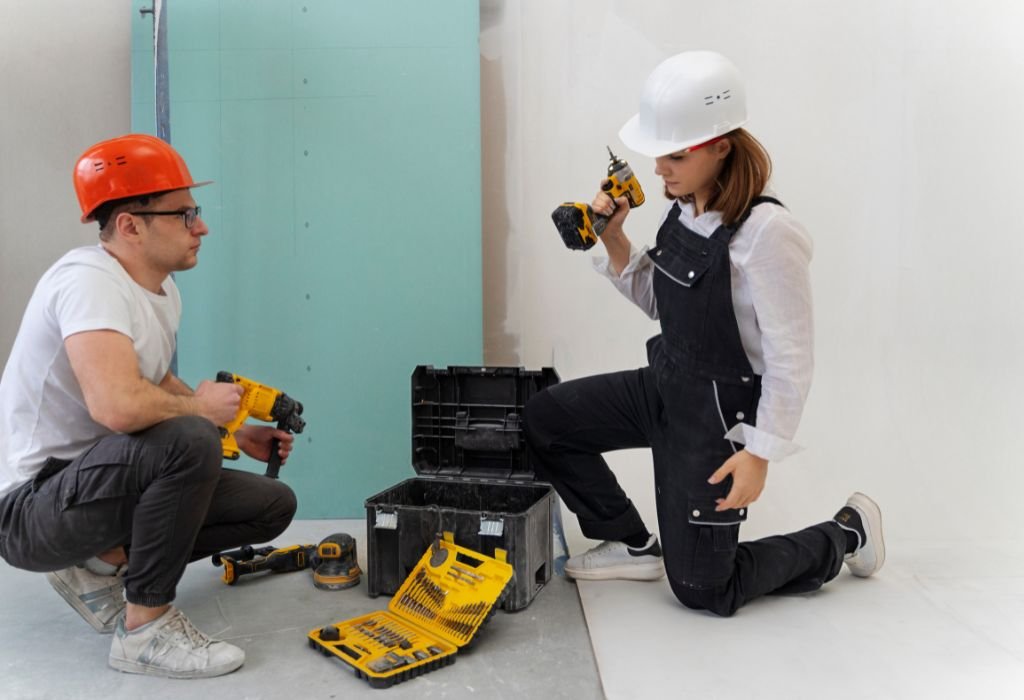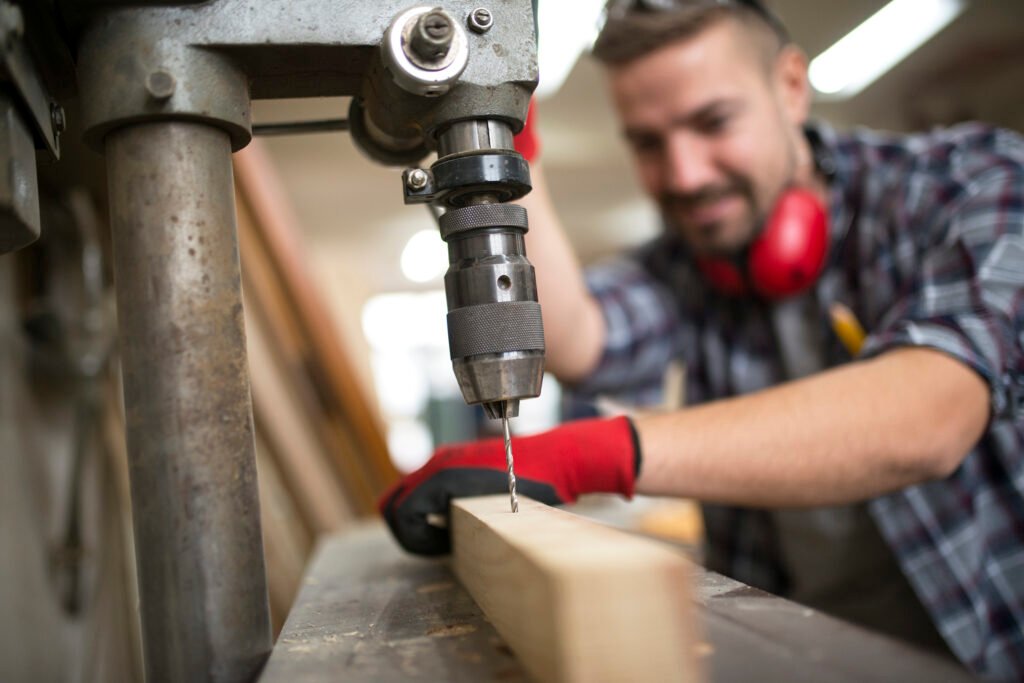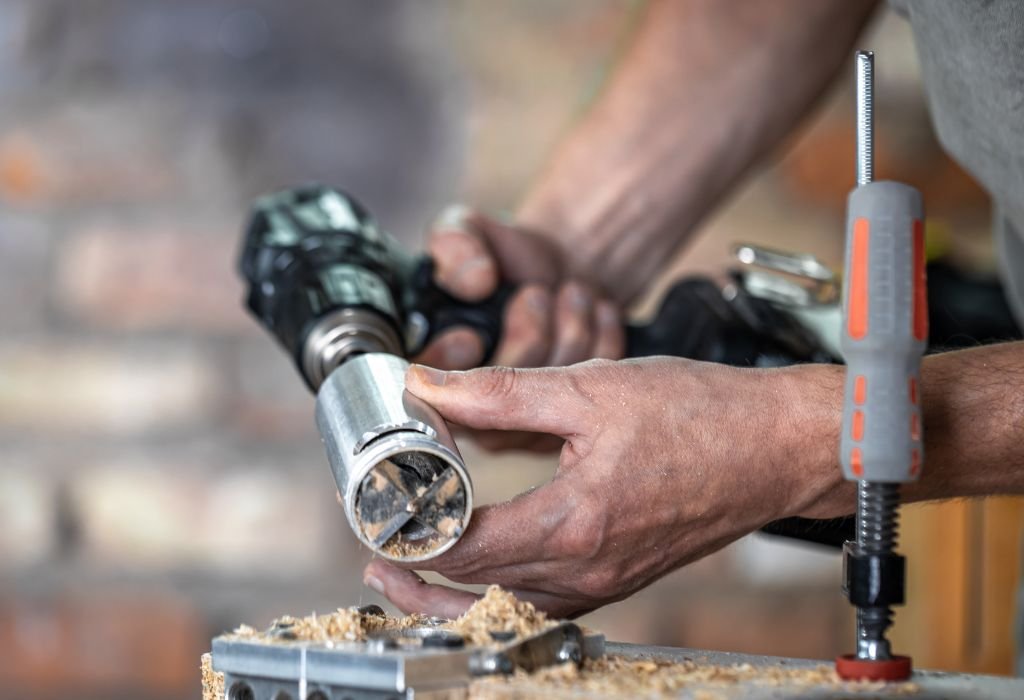A mechanic faced with a rusted screw on a brake rotor may struggle with standard screwdrivers and drills that slip or strip the head.
The simple but powerful manual impact driver becomes the tool of choice, delivering sudden bursts of torque that break fasteners loose.
Unlike power tools that rely on motors, this tool uses hammer strikes to convert downward force into twisting action.
The result is a reliable way to free stubborn screws that would otherwise require drilling out or cutting.
Corrosion is a widespread issue, costing industries over $276 billion annually in damages and repairs according to NACE International.
Much of this cost comes from fasteners that seize over time, highlighting the importance of effective removal tools.
For DIYers and professionals alike, the manual impact driver remains a must-have tool for automotive, machinery, and household projects.
This guide explains what a manual impact driver is, how to use it, and why it belongs in every toolkit.
What Is a Manual Impact Driver?

A manual impact driver is a heavy-duty screwdriver-like tool that uses hammer strikes to generate torque. It is designed to loosen rusted, corroded, or over-tightened screws and bolts.
The tool has a ½-inch drive or hex chuck that accepts interchangeable bits and sockets. This makes it versatile for different fastener types.
When struck with a hammer, the downward force is converted into a sharp twisting motion. This prevents cam-out and delivers controlled power directly to the fastener.
It is widely used in automotive repair, machinery maintenance, and woodworking.
What is a manual impact driver?
It is a hand tool for loosening stuck fasteners.
How does it work?
Hammer strikes convert into torque.
What bits does it use?
Hex bits and sockets.
Is it different from a power impact driver?
Yes, it relies on manual force.
Who uses manual impact drivers?
Mechanics, DIYers, and woodworkers.
Tools and Setup Before Using
Start by choosing the correct screwdriver or socket bit that matches the fastener head. Using the wrong size risks stripping or damaging the screw.
Insert the bit firmly into the impact driver and check it is secure. Loose bits can slip under impact and cause injuries.
Wear safety goggles and gloves to protect yourself from debris and hammer strikes. Safety gear reduces the risk of accidents in a workshop.
Finally, select a heavy hammer that can deliver strong, controlled blows to the back of the tool.
Do you need special bits?
Yes, impact-rated bits are best.
Can it use sockets?
Yes, with a compatible drive.
Do you need safety gear?
Yes, gloves and goggles are essential.
What hammer should I use?
A heavy hammer like a ball-peen.
How to prepare the tool?
Insert bit, secure tool, wear safety gear.
Step-by-Step Guide: How to Use a Manual Impact Driver
Place the correct bit into the fastener head, ensuring a snug fit. A secure fit prevents slipping when the tool is struck.
Hold the impact driver straight and press it firmly against the fastener. Stability ensures energy transfers effectively.
Strike the back of the driver with a hammer using strong, controlled blows. Each strike produces a burst of torque that loosens the screw.
Repeat the process until the fastener breaks free, then finish removing it by hand or with a ratchet.
How many hits does it take?
Often two to three solid strikes.
Can it tighten as well?
Yes, by reversing the driver setting.
Does it replace a wrench?
No, it complements other tools.
Can it break bolts?
Yes, if overused or too much force.
How do you know when it’s loose?
When resistance decreases after strikes.
Common Uses for Manual Impact Drivers

Manual impact drivers are widely used in automotive repair. They are essential for removing rusted rotor screws, bolts, and engine parts.
They also help in motorcycle maintenance where small, seized screws are common. Mechanics often carry them for difficult fasteners.
Woodworkers use impact drivers to remove seized screws in cabinetry or furniture restoration. The torque helps without damaging surrounding material.
Machinery and workshop repairs also benefit, as impact drivers loosen fasteners exposed to vibration and corrosion.
Is it used in auto repair?
Yes, especially for brake rotors.
Can it remove rotor screws?
Yes, it is designed for that.
Is it good for woodworking?
Yes, it removes stuck screws.
Does it work on machinery?
Yes, for corroded bolts and screws.
Is it for home use too?
Yes, for stubborn fasteners.
Benefits of Using a Manual Impact Driver
The manual impact driver provides high torque without electricity or batteries. This makes it portable and always ready to use.
It reduces the risk of stripping screw heads by keeping the bit firmly engaged. This saves time and protects expensive parts.
Durability is another advantage, as manual tools last for decades with minimal maintenance. They have no motors or electronics to fail.
For beginners, it offers a simple learning curve and affordable entry into professional-grade fastening tools.
Why use manual instead of power?
It is cheaper and reliable.
Does it save money?
Yes, no batteries or motors needed.
Is it better for old screws?
Yes, it loosens rusted fasteners.
Does it last longer than drills?
Yes, with proper care.
Is it beginner-friendly?
Yes, simple to operate.
Limitations and Safety Precautions
While effective, the tool requires physical effort and repeated hammer strikes. This makes it tiring for extended use.
It is not suitable for very large bolts or industrial fasteners. Power tools may be better for heavy-duty applications.
Misuse can damage delicate surfaces if the hammer slips. Always control your strikes and protect nearby materials.
The risk of injury is real if safety gear is ignored, so goggles and gloves are non-negotiable.
Can it replace all tools?
No, it complements them.
Is it safe for aluminum parts?
Yes, with careful use.
Can it crack surfaces?
Yes, if hammered carelessly.
Do you need experience?
No, beginners can learn quickly.
Is it tiring to use?
Yes, for frequent heavy jobs.
Manual vs Power Impact Driver

A manual impact driver relies on hammer strikes, while a power impact driver uses a motor. Each has distinct strengths.
Manual tools are cheaper, portable, and durable, making them ideal for occasional use. They work without electricity or batteries.
Power impact drivers deliver torque faster and with less effort. They are better for repetitive or high-volume work.
Many professionals own both, using manual drivers for stuck fasteners and power tools for daily tasks.
Is manual better than power?
For rusted screws, yes.
Which is cheaper?
Manual tools cost less.
Which is easier to use?
Power drivers require less effort.
Do mechanics use both?
Yes, depending on the job.
Is manual more durable?
Yes, it has fewer parts to break.
Conclusion
A manual impact driver is a powerful yet simple tool for loosening rusted, over-tightened, or corroded fasteners. It belongs in every serious toolkit.
It works by converting hammer strikes into torque, providing force where drills and wrenches often fail. With the right setup and technique, it frees screws without stripping them.
Its benefits include portability, durability, and affordability, though it requires physical effort and caution. It complements rather than replaces power tools.
Final advice: keep a manual impact driver in your garage or workshop for those tough jobs where only controlled, hammer-driven torque can save the day.

I’m John F. Nicholas, the founder, lead writer, and drill enthusiast behind 101drill.com. With years of hands-on experience in power tools and DIY projects, I created this platform to share practical knowledge, expert tips, and real-world insights to help others master the art of drilling.
